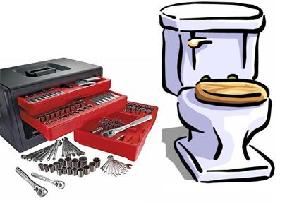

Is a Homebuilt Aircraft Project For You?Do you have the mental attitude needed to complete a homebuilt airplane? Is it more economical? Should you build or buy? There have been lots of articles, blogs, and forum discussions about this by a lot of people who are smarter than me. But here are my two cents worth.
Cost There is no way you can argue that you can buy a new airplane for the same price you can build one. In my experience, to get the same performance from a new production aircraft you will spend two to three times what you will for a homebuilt. But the expense doesn’t stop there. When repairs are needed, unless you’re an A&P, you will be shelling out a lot of money. Labor is running over $50 an hour at most shops, and parts have gone out of the roof. Take, for example, the alternator. If you own a Piper Cherokee with an O-360, you will shell out $450 for a rebuild alternator. If you had a homebuilt aircraft with the same O-360, you could go to Autozone and buy an alternator for $40. The same holds true for all the parts, from recovering the upholstery to loading up that new panel with the latest in digital technology. I put my entire IFR panel with GPS and two-axis autopilot together for under $10,000. Check out the chart below for a side by side comparison between experimental and certified (TSOed) instruments. I used what I installed in my plane for the Experimental column, and the cheapest instrument I could find for each of the certified instruments.
The I didn’t include radios and antennas because you have to use the same radios in both airplanes. There aren’t any experimental only radios out there yet. "I Could Never Do It" I have talked to many people about building my kitplane. I get a lot of reactions like “I could never do it” and “I don’t know anything about building.”
If you have your own tools, and you lift the cover before calling the plumber, you can build a Vans kitplane. These kits are put together with the first time builder in mind. Vans suggests you start with the tail kit, then move on to the wings and fuselage for a couple of reasons. The parts are cheaper, so if you mess one up, it isn’t as expensive to fix. And they have written the plans and directions with this building order in mind. Fun This point may be debatable. If you don’t like working with your hands, then a homebuilt kitplane isn’t for you. I find it very relaxing to get to the airport and work on my project. I’ve heard it called lots of things like “escaping to your man cave.” That’s exactly right. If I have had a hard day/week or am feeling stressed, I can build a part or buck a few rivets, and everything is right with the world again. Of course, I also get that feeling when I fly. Piece of Mind Here is a biggie that, in my opinion, most people get wrong. Usually I hear “I would never trust a plane that I built,” or “Your wife is going to fly in something you built?” Let me tell you, I feel much safer in my homebuilt than in a factory built. I know the guy who primed the parts, and I know he didn’t take any shortcuts. I know the guy who bucked the rivets, and I know he drilled out every single one he messed up. He never once said “That’s going to be covered up anyway, no one will ever know.” He didn’t show up for work hungover, he wasn’t distracted from his work by his plans for Friday night. The other half of the piece of mind is in knowing your aircraft. I am intimately familiar with mine. I think I’ll notice anything wrong sooner because I built it and know what it is supposed to be like. Bragging Rights I love talking about airplanes, and I especially love talking about mine. Relating to other homebuilt kitplane builders about the difficulties, and how we overcame them. Showing off the personal touches. I
saw this sign "For Sale" once. Go figure.
This Is For Me For all these reasons, a homebuilt aircraft project was exactly what I wanted to do. Read here why I chose the RV-8 from Van's Aircraft. My Wife's Thoughts Of course, my wife has a few things to say about this whole idea of building my own airplane. Check out her thoughts here. |
 I always ask
the same two questions, “Do you own a set of
craftsman tools?” and
I always ask
the same two questions, “Do you own a set of
craftsman tools?” and